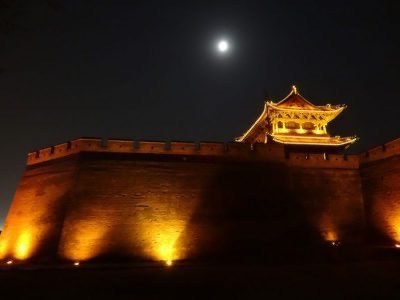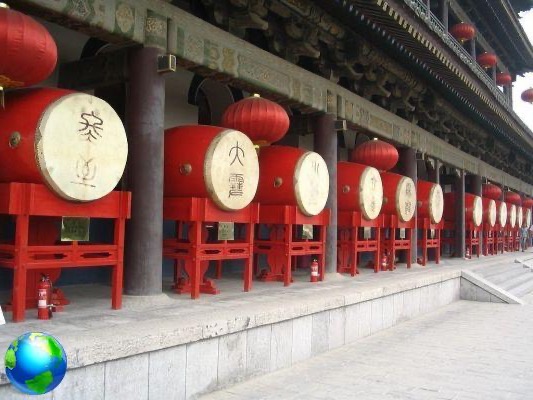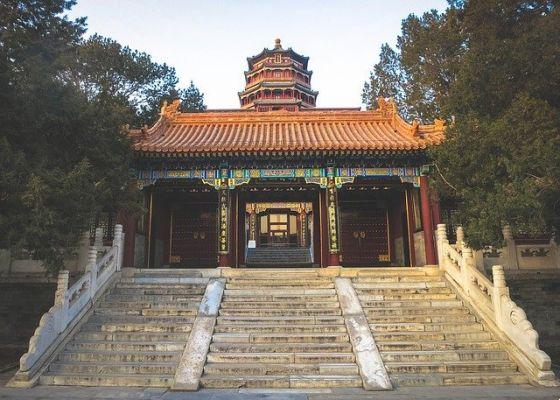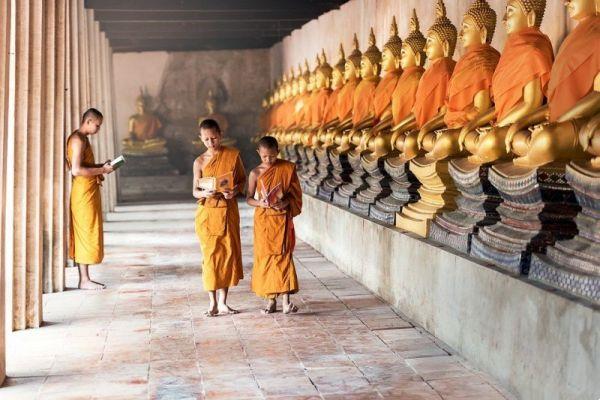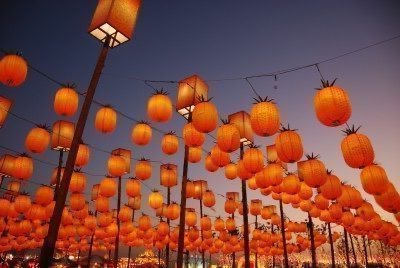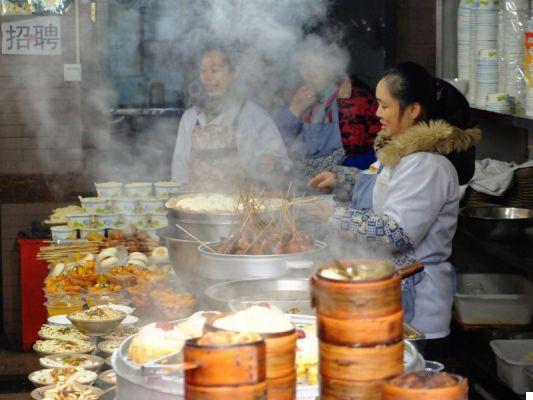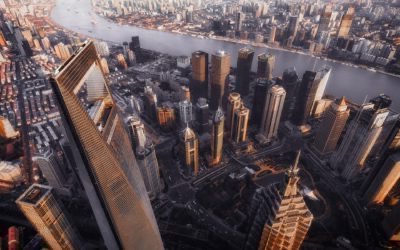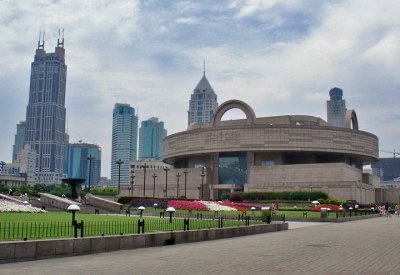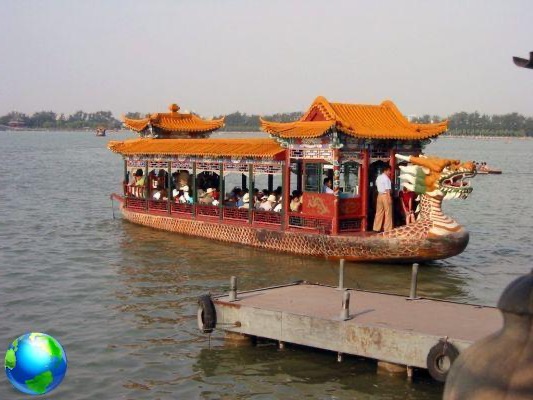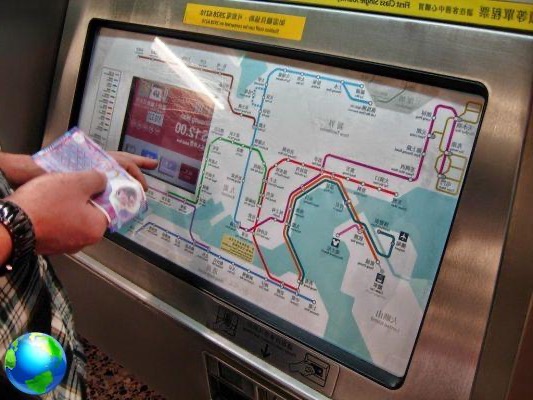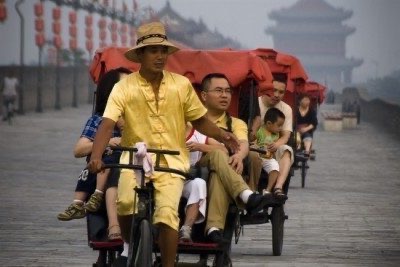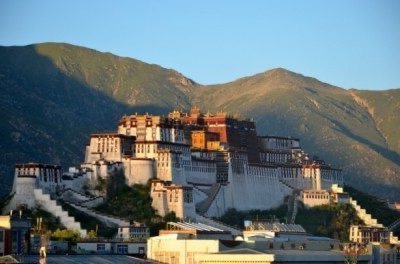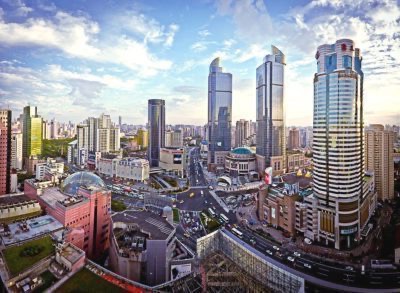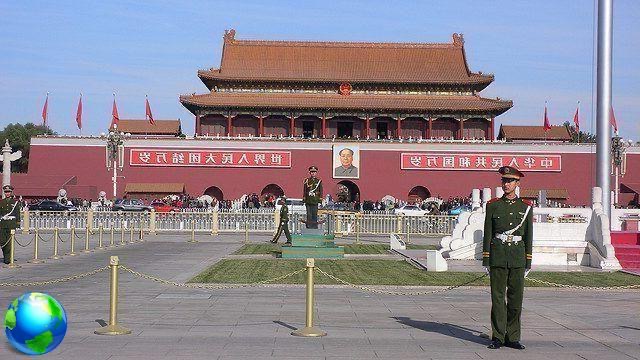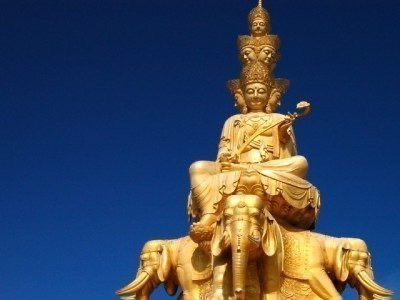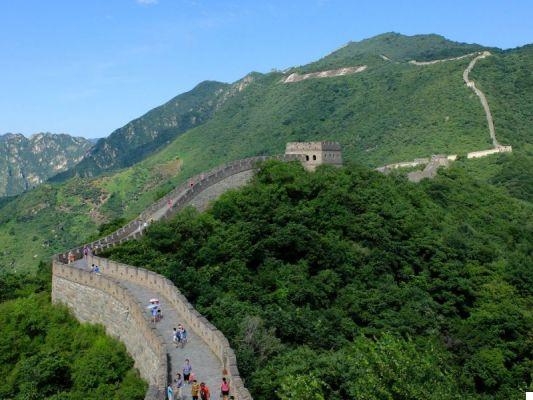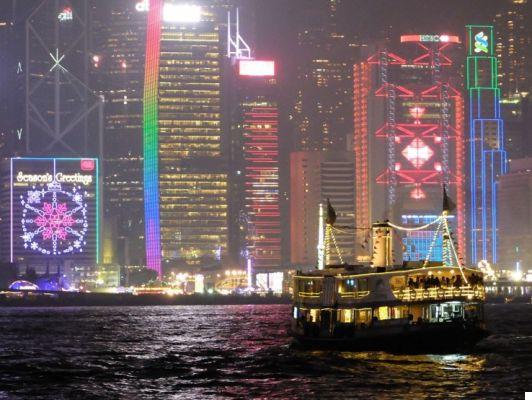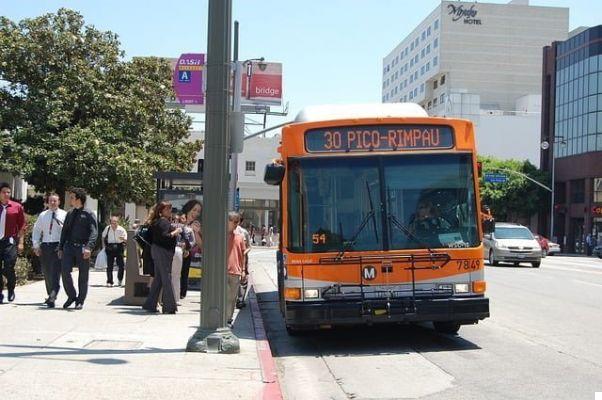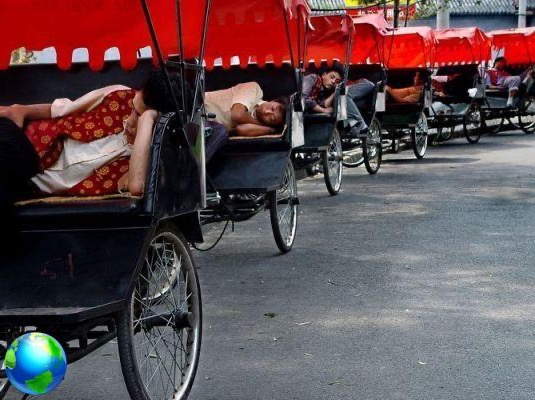
Beijing it is a huge metropolis. Covered by its blanket of smog more or less evident depending on the climate and the amount of dust in the air, it appears at first glance as a vague ensemble of large buildings, sometimes unkempt, sometimes futuristic. In reality it is a city that transforms itself and lets itself be discovered as you visit it, leaving the traveler speechless for its heterogeneity. If you are considering arranging a low cost trip to Beijing, know that the do-it-yourself It will certainly give you great satisfaction, making you feel like real explorers in an unknown land and that extricating yourself between the various means of transport could be one of the most fun adventures. In the event that, like me, you do not know the Chinese language at all, however, (and this being the only one fluently spoken in Beijing), you may encounter some difficulties in moving around.
Here are some practical and low-cost tips, divided by means of transport, to better deal with the great distances to travel to visit the city.
Metropolitan
La Beijing subway it is an efficient means of transport that connects many parts of the city, at least as regards the main visiting sites and the busiest areas. There are also peripheral branches, to reach less traveled areas but still inhabited by millions of Pekingese. The impact with the subway is strong at rush hour and at the most central stops, where a multitude of people throng in front of the tracks (many protected by glass). However, the frequency of the trains is very close, which makes everything easier. To enter the station you have to pass a control with metal detector, you will be asked to pass your bags or backpacks in the same car usually present at the airport. The attendants are very fast, but at busy times and in very central stations, there may be a bit of a queue. The cost of the ticket is only 2 yuan, just over 20 euro cents and is valid for a ride with infinite changes without time limits. The fare is always the same, whatever line you want to travel, so it's very easy to get tickets too. There are automatic machines in various languages, but it is also very simple to make them over the counter. The staff don't speak English (or they speak it badly) and you don't speak Chinese? No problem, just mimic the number of tickets you need and you will surely receive the right ones, as they are all the same!
The Beijing subway lines are clearly marked and the only difficulty can be represented by the long strange sounding names, which though are also announced in English. Once you enter the car, the green-lit stops are the ones you are going to, a final check to confirm if the right direction has been taken.
Changes can take time, in fact two subway lines are often connected by long walkways, take this into account when organizing an itinerary or if you want to calculate approximately the time it takes to reach your destination.
Taxi
Quick medium, convenient and economical to move throughout Beijing. Yes, in Beijing you can indulge in the luxury of being driven around the city by taxi, enjoying the view by day and by night, flanking traditional temples and hutongs, at a cost of just over 1 euro. 30 cents for the first three kilometers and very little for subsequent ones as well. If you are four, a taxi will cost you very little and can save you when, after a day of walking on the very long distances of the city, your feet will ask you for a little rest. Also in this case, there is no shortage of small tricks to be taken in order not to run into “abusive” or rather “smart” taxi drivers.
- Choose taxis with the bi-color side, the strip in the middle definitely yellow, then the rest variable between green, red and blue. On the roof there is a sign with the word "Taxi", illuminated if the car is free and available, switched off if it is occupied.
- Stop at the side of the road and reach out to hail the taxi. Do not take one that is already stopped at the curb, even if the car seems to be regulated, the taxi driver is a "private person" who does not respect the prices of the public company, waiting for customers, very often inexperienced foreigners. So you may find yourself having to negotiate (which is difficult if you don't know the language) or worse, being told a much higher price than normal as soon as you get out of the car. Remember, taxis in Beijing always work, so it is difficult to find some waiting for you.
- When you enter the taxi, you will find one in front of the passenger seat photo of the driver with his identification number. That's one more guarantee that he's a "regular" taxi driver. In fact, in case of any irregularities found, you can write down that number and make a complaint to the company against that particular person. You will also clearly see the taximeter, which should start from 13 yuan, i.e. just over 1 euro and 30 cents for the first 3 kilometers. If you have called the taxi from the hotel or called it yourself to get it at a specific time, the fare will go up a little, because it will include the call. Within Beijing, it is difficult to spend more than 80 yuan each way (around 8 euros).
- The taxi driver will need the name of the destination in Chinese. Therefore, take precautions and bring with you a sheet with the names of the places where you have to go, first of all your hotel, the point of arrival of your every day and point of reference. Usually when making a hotel reservation in China, the name in Chinese characters is always displayed as well. Print it and always carry it with you.
Bus
And the cheaper means to move around the city. It is always nice to sit on a bus and walk the streets of an unknown city, but in the case of Beijing, I recommend doing it by taxi if you don't know the language. In fact, bus stops are often marked only in Chinese and some, as it happens, arbitrarily skip stops for reasons that the Chinese may understand very well, but which for us are nothing but a source of discomfort (the stops are very distant from each other. on the other and losing one can mean miles of additional walking). Also at the stop the directions on the route are all in Chinese and it is practically impossible to understand the route of that bus if you have not already read it from a guide or it has not been recommended to you. In any case, the price of a ticket is worth a try, perhaps even for a single stop or two. Take a bus in a very central area and for only one yuan (10 euro cents or a little more) you will experience the thrill of queuing up dedicated to your number with a lot of "sorting line" even quite strict and sitting on a double-decker bus, surrounded by a multitude of chatty Chinese, perhaps loaded with cartons and bags full of Who knows what.
Bicycle
Many people in Beijing travel by bicycle. But they know how to do it. They know how to extricate themselves in a traffic that is sometimes unimaginable, between electric scooters, crazy horns, rickshaws, taxis that run and buses that suddenly appear. In some points of the city I have seen stations for renting bicycles, but honestly a little for the pollution, a little for the traffic, I would not recommend this vehicle as a great option for getting around. Much better to walk, being careful when you cross, even when the traffic light signal for pedestrians indicates green.
Rickshaw
It is in the common imagination, the typical Pekingese rickshaw that moves through the streets of the city pulled by a local, on foot. Unfortunately I have to deny this, having only seen them pulled by a bicycle. I was tempted to go up, but then I gave up abandoning myself to the walk, the only real way to enjoy the beauty of Beijing up close and calmly. I must say, however, that I regret it and that when I return (the hope of an inveterate traveler is always the same), I will certainly give myself a ride on a rickshaw in a characteristic area. Rickshaws are present in the most touristic and crowded areas, but they easily fit into very picturesque secondary alleys. Upon exiting the Forbidden City you will be attacked by drivers who will call you in all languages to take you on their vehicle. Same thing in front of the main and most visited temples. The rickshaw is perfect for a Hutong tour, Beijing's oldest and most characteristic neighborhoods. Often a driver can enter narrow alleys where you would not be able to enter by any other means of transport, other than on foot. Not having tried it I don't know the exact price, but like everything in Beijing, it can be treated. Do it and you will be able to tick off your rickshaw ride at a very affordable price.
I do not know in which category to inscribe very curious means, which could resemble the ancestors of ours covered scooters, but all in sheet metal, with a funny profile, as if they were mini armored vehicles with three wheels. The drivers of these "armored little bees" could approach you while you are waiting for a taxi and offer you their alternative vehicle. I have never tried them, they are only for two people, who knows if they are not comfortable beyond the claustrophobic aspect. Anyway, also negotiate on those for the price and if you want, try this adventure too. Beijing is a constant amazement, it is the destination where you feel like travelers because you are far from home, where everything is different and particular, where even getting on a means of transport can make us feel like experienced explorers.





